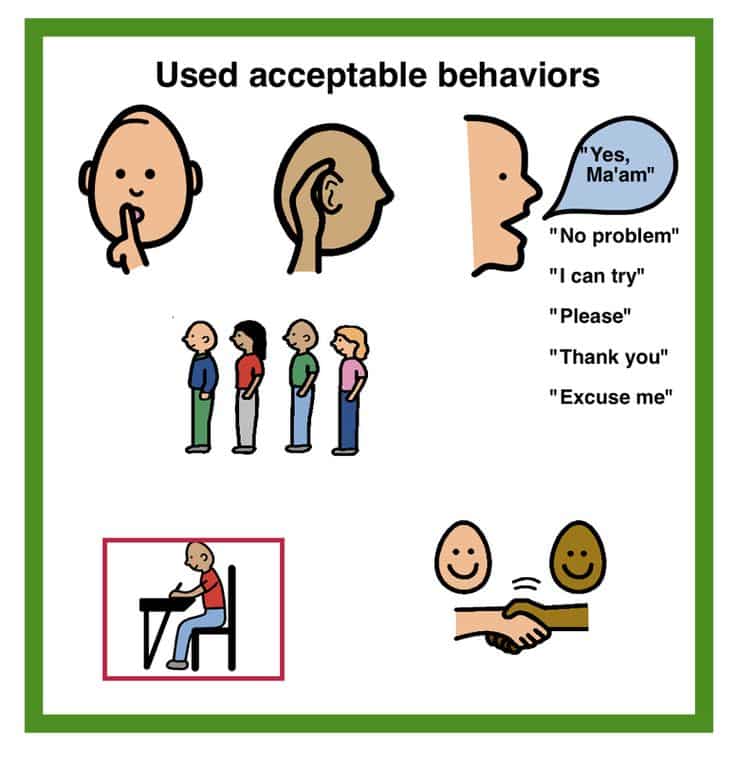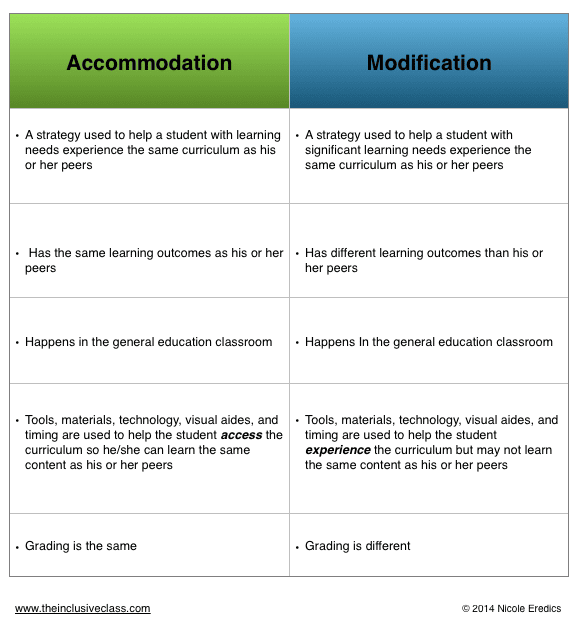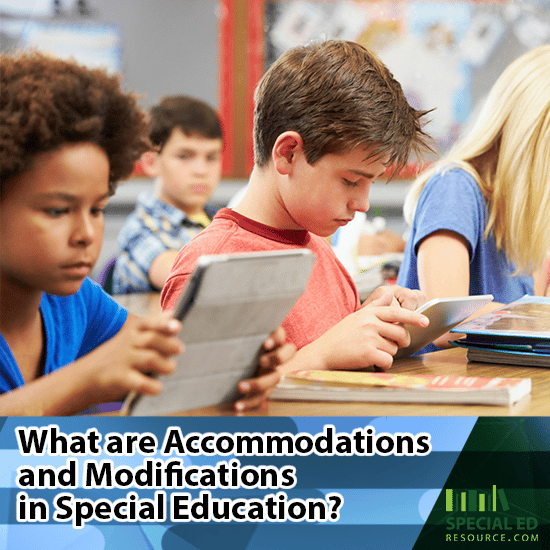Try A Smart Goal Challenge
If a student with autism is having a hard time with school, sit down with them and pick a SMART goal to work on over the next month or semester. SMART goals are an effective way to help children with autism reach their potential, and they are:
Suppose, for example, that your student with autism is having trouble learning how to recognize emotions. You could make a goal with them to practice flash cards with emotions on them every day for five minutes and for the student to recognize each card by the end of the month. As long as the SMART goal hits all of the criteria, it can help your student focus on ways to make progress.
Printed Schedules And Warnings Of Changing Activities
Autistic children thrive off of routines. Changes in routine or transitioning from one activity to another can be difficult. Printed schedules with words and pictures are a way to help and reassure autistic children.
If there will be a change in the schedule, letting the child know a couple of days in advance gives them time to prepare, though they may still have difficulty with the change.
Visual Cues For Common Requests
You stand in front of your class, give a verbal request one time, and expect your students to follow that command until you give another. Does this sound familiar?
As Temple Grandin famously explains, people with autism often think in pictures. They hear the words, and the phrases morph into photographs in their minds. Your spoken command could bypass this system and become meaningless. Your autistic student could be left wondering what you want and why.
Create flashcards for your students containing common classroom commands, such as:
- Listen carefully. Use this card when youre explaining a difficult concept and dont want an interruption.
- Ask or answer questions. Use this card to entice students to raise their hands to speak with you.
- Sit at your desk and write. This card can encourage students to stay seated while completing assignments or homework.
- Take a break. Use this card to release students from their desks for unstructured time.
Think hard, and you probably have many more commands you give your students regularly. Each one could be a flashcard cue for your classroom.
Speak your instruction, and place the card in a prominent spot, such as the upper corner of your chalkboard or whiteboard. Replace it when you give another command.
Recommended Reading: What Does It Mean To Have Autism
Be Consistent Each Day
Consistency is key! Children with autism thrive on steady patterns and a reliable schedule. Changing up their routines throughout the day, from day to day, is not advised. Giving a child with autism a visual schedule for their day and sticking to the plan can assist them in being more independent, in preparing for transitions and what is coming up next in their day, and helps lessen anxiety and worry. Children on the spectrum tend to prefer rules and routine over spontaneity and going with the flow. Teachers and parents of these children will learn quickly that being inconsistent is not what is best. Of course, things happen that are out of their control in those instances, it is always good to know what the calming strategies are and also what Plan B is going to be.
Strategy #: Focusing On Autism Reading Comprehension Strategies

Reading is an essential skill for lifetime learning. Without strong reading comprehension skills, not only are students likely to struggle with completing their assignments and retaining information theyre also at risk for additional problems. According to The Childrens Reading Foundation, children with poor reading comprehension are more likely to struggle with low self-esteem and feelings of inadequacy, and may even be in danger of attendance and dropout problems.
Because some research has shown that reading difficulties are common in children with ASD, educators should be mindful of their strategies for teaching literacy. Here are five techniques that educators can use to teach stronger reading comprehension skills to students with ASD:
You May Like: How To Get Help For Autism
Printed Schedules Of Activities & Events
Spontaneity and autism dont always intertwine. Students often appreciate a warning before a task ends and another begins. They might enjoy knowing what will happen during each step of the school day.
Autism advocates encourage the use of visual schedules. A photo or illustration represents each task, and the child can follow along as each item is completed. Yours might include information about:
- Lessons. Identify when youll discuss math, geography, English, and so on.
- Breaks. Specify when lunch will begin and end, and outline any other exercise opportunities you offer your class.
- Tests. If youre holding a quiz or exam, specify when it will both begin and end.
- Therapy. If your student must leave class to work with counselors or therapists, identify those appointments clearly.
Researchers say theres no evidence that all students with autism benefit from visual schedules. Some find them helpful, while others do not. However, they point out that making a schedule like this is relatively easy, so the risk of introducing it and wasting time is low.
Do All Students With Autism Require Curriculum Modifications And Adaptations
The short answer is no. The students temperament and level of functioning will provide guidance for whether, when and how his or her learning needs should be addressed. Some students diagnosed with an autism spectrum disorder can be successful in traditional learning environments with few adaptations or none at all. Others whose needs, sensitivities and triggers make their ability to function much more challenging to manage may require an almost entirely separate curriculum from what is taught in a traditional classroom. Also, the need for curriculum modifications and adaptations can vary with age, developmental stage and subject.
Also Check: What Does It Mean To Be Autistic
Consult An Occupational Therapist
I always recommend whenever a child is autistic , consult with an Occupational Therapist to better understand the childs specific sensory needs and the sensory supports that will be most helpful for them. Kaye-OConnor. An OT may use:
- Play therapy: Play is often how autistic children express their thoughts and emotions. An occupational therapist can use play to teach children how to connect with people through a medium that makes sense to them.
- Joint attention symbolic play engagement and regulation : Although more research is needed to support the effectiveness, JASPER teaches autistic children how to focus on two things at once, namely a toy and a person. According to 2021 research, children who engage in JASPER often show a marked improvement in their attention, social, and language skills.
- Integrated play groups : IPGs give autistic children an opportunity to play and learn from their peers in a guided, safe environment.
Teaching Strategies For Students With Autism
In 2000, fewer than 100,000 students with autism were served by the Individuals with Disabilities Education Act , a federal law requiring access to free public education for disabled children and young adults. By 2018, less than two decades later, that number had to more than 700,000 students over 10 percent of the 6,964,000 disabled students who were covered that year.
As more U.S. students are diagnosed with autism spectrum disorder a disorder whose prevalence rate has nearly tripled since 2000, according to the Johns Hopkins Bloomberg School of Public Health its increasingly important for educators to develop adequate and appropriate response strategies. By increasing their awareness of various educational strategies for students with autism, not only can teachers better serve their students they can also develop valuable skills that will help them stand out to potential employers.
In this article, well explore four teaching strategies for students with autism spectrum disorder, which can be utilized to help young learners achieve better outcomes. Whether youve already begun your career as a special education teacher, or you are still in the process of earning your credential through an accredited teaching program, the methods and concepts discussed below can benefit the children you work with.
Don’t Miss: Does Autism Run In The Family
Offer Accommodations For Students With Limited Motor Skills
Some students with autism may have more trouble with activities that require fine motor skills than others. In an article with the Indiana Resource Center for Autism, renowned scientist and advocate Dr. Temple Grandin suggests offering accommodationslike typing on a computer instead of writingto mitigate these challenges.
When it comes to specific accommodations, it may depend on the individual. Its always a good idea to reach out to a students family to determine the best resources for their child.
Create A Plan For Typically Unstructured Times
These times include lunch, recess, daily pick ups & drop offs, etc. These times can cause serious anxiety in kids with autism. Having a pre-established plan helps both the child and the relevant adults know what to expect. Part of this plan might be using a peer to peer buddy system, role playing scenarios, and social stories.
Read Also: How To Discipline A Child With Autism
Access To Resource Room
The creme de la creme of accommodations for autism. I saw this one on virtually every single IEP I helped create. Resource rooms are so important to a childs stability, both emotionally and academically. They provide a grounding touchpoint for the child where they know theyre safe, loved, and understood.
If youre serious about homeschooling, but youre not sure where to start, weve got you covered. Ready, Set, Homeschool! is the complete homeschool prep workbook to help you feel confident. Whether youve got kiddos with special needs or not, Ready, Set, Homeschool! will walk you through a five-day preparation blitz. It covers
- Homeschool Compliance
- Setting up your familys rhythm
- Getting and staying organized
Strategy #: Providing Appropriate Feedback For Students With Asd

Students who have ASD frequently have difficulties with communication. Therefore, it is essential to ensure that you are clear and direct when providing student feedback, asking questions, or giving directions. Avoid metaphorical or abstract language and choose simple, straightforward wording to minimize the risk of misunderstandings. Its also important to periodically check in with your students to see how theyre progressing and whether theyre struggling with any particular aspects of a course, task, or assignment.
You May Like: What Is The Difference Between Autism And Down Syndrome
Bring Special Interests Into Lesson Plans
Many children with autism have a fixation on certain topics or activities. Take advantage of what theyre passionate about and use it while teaching students with autism to help them focus in class. If a child with autism loves outer space, for example, you could plan a math assignment about counting the planets in our Solar System.
Accommodations Services And Supports Provided To Students With Autism
Some youth, particularly those with disabilities, need supports and interventions beyond the traditional classroom experiences to be successful at school . Secondary-school-age students with autism began receiving services as young children parents report that, on average, youth were 4 years old when they first received disability-related services from a professional . By the time they are in secondary school, according to teachers, 97 percent of students with autism receive some type of accommodation or modification, learning support, technology aid, or related service to enhance their performance in school.
More than 9 out of 10 secondary students with autism receive accommodations and modifications. Additional time to complete assignments or tests are among the more frequent types of accommodations . Tests and assignments also are modified 49 percent of secondary students with autism receive alternative tests, 33 percent are given modified tests, 25 percent have tests read to them, and 38 percent are given shorter or different assignments than the rest of the class. Approximately 2 out of 5 receive slower-paced instruction. Almost one-third have teachers who modify grading criteria. Physical aspects of the classroom are modified for 16 percent of students with autism.
Also Check: Where To Get Autism Screening
Autism In The Classroom: Strategies For Success
School Community Tool Kit
- Be calm and positive. Model appropriate behavior for the student with autism, as well as for other students, by greeting him and engaging him in a respectful way.
- Be aware of the characteristics of autism and general strategies – for quick reference reminders use the resources included in this kit.
- Use the About Me information sheet to get to know relevant facts about each particular students likes, fears, needs, etc. Ask specific questions regarding safety and impulsivity. If you havent received one, ask the school team whether there is an About Me information sheet available for each student with autism in your classroom.
- Promote a welcoming environment, and provide opportunities for your student to develop social interaction skills and extended learning
- Teach understanding and acceptancesee the Resources section of this kit for suggested reading, including books and programs to use with the students.
Learn strategies for success for teachers by subject, as well as all members of the school community, in the Autism Speaks School Community Tool Kit.
Also Create A Deescalation Plan
What warning signs does your child exhibit before they experience a meltdown or other negative behavior? What should teachers or staff do when they notice those warning signs to help your child deescalate instead of escalating? Some suggestions might be to offer a quiet room to cool off, have access to a trusted adult, or use a particular device/tool/strategy to help them cope.
Also Check: What Does An Autism Meltdown Feel Like
Helpful Home Modifications For Children With Autism
If you are a parent whose child was recently diagnosed with autism, you might be trying to figure out how you can make your home a little safer for them while still giving them space to thrive. If youre wondering how you can design your home to maximize your childs safety and wellness, these tips will help you throughout the process.
Accommodations For Autism: 21 Best Recommendations For Learning
This post may contain affiliate links. See our disclosure policy for details.
There are a lot, I mean a lot of accommodations for autism, ADHD, anxiety, and more out there. I should know. I used dozens during my time as an alternative education teacher. But not every accommodation will help every child.
Kids with muscular dystrophy dont need the same accommodations as an autistic, blind, or dyslexic kid, after all. So how is a parent supposed to wade through all the lists of accommodations out there? How can they understand what the terms mean, and evaluate if its right for their child?
While I cant list every single accommodation under the sun, Ive covered some of the most important. Ive broken them up by categories: sensory, language, social/behavioral, executive functioning, and learning accommodations. Since not all autistic children experience the same range of disability in each area, you can pick and choose which will work best for you & your child.
Finally, some of these only apply to a child in the public school . However, many of these will be useful to parents homeschooling their autistic child. Wherever you fall on the education spectrum , lets get right to it!
Also Check: How To Know If Someone Is Autistic
Teach Students About Historical Figures With Autism
Although the disorder wasnt discovered until the twentieth-century, people with autism have made important contributions to history, and its important to educate students about themnot just in April but throughout the year. Here are a few well-known figures who are diagnosed with or believed to have had autism to get you started:
- Emily Dickinson
Identify Recognize And Encourage Special Interests

Autistic children often have an area or specific topic of interest that they enjoy learning and talking about.
Kaye-OConnor points out, Special interests are one of the great joys of autistic life. Support and encourage your childs interest in their favorite topics, and join them in their enthusiasm.
Read Also: Autism In Public Schools
Encourage Interaction With Peers But Watch For Bullying
Autistic children are often the subject of bullying and teasing because of their behavioral differences.
Teachers can head this off by educating the general education peers about students with autism in general and making the class aware of the strengths and needs of this student in particular, says Weinfeld.
Autism Spectrum Disorder Implications For Learning
People with ASD often face great challenges in a postsecondary educational environment. People who have these conditions have a strong need for predictability, marked by rigidity in thought, speech, and behaviour, and may become totally overwhelmed and respond angrily if expectations are changed or if assignments are altered. Research by Fleischer suggests that instructors should be as clear as possible when communicating expectations, and should try to stick to the syllabus and to other agreed-upon arrangements as much as possible so as to lessen chances of students becoming upset and overwhelmed.
Van Hees, Moyson, and Roeyers observed that socialization presents immense challenges for people with ASD. Interpersonal relations are often an area of marked impairment for people who have ASD. People with ASD often have difficulty reading social cues, understanding sarcasm, or negotiating differences of perspective. Instructors should be cautious when requiring group work, as a student who has ASD may have great difficulty participating in such activities.
Recommended Reading: Can You Work With Autism